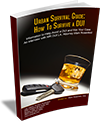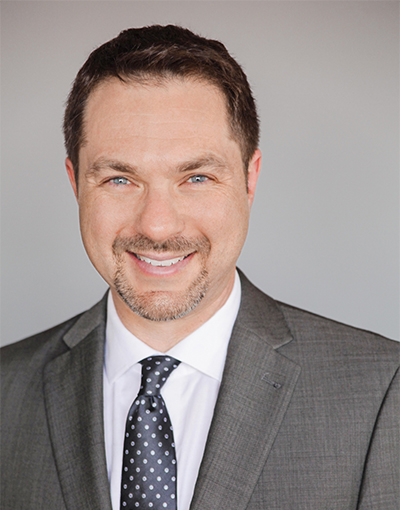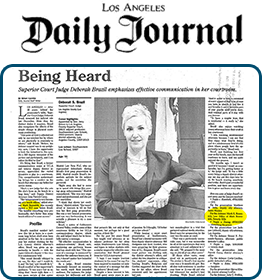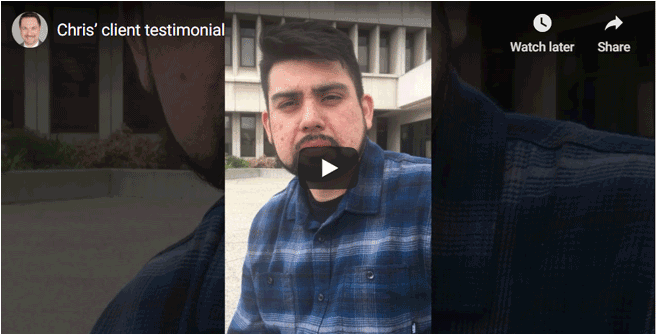CROSS-EXAMINATION
BY MR. ROSENFELD:
Q: Good afternoon, Detective Curry.
A: Hello, Sir.
Q: Did you get a chance to talk to the district attorney before testifying today?
A: Yes.
Q: And did he talk to you about some of the questions I may be asking?
A: Yes.
Q: Did you get a chance to talk to Sergeant Brooks?
A: He was present when we were talking, yes.
Q: Did you talk to Sergeant Brooks over the lunch hour about some of the questions I’ve asked him?
A: No.
Q: You didn’t talk to him in the hallway out here outside the elevators about some of the questions?
A: No, no, Sir.
Q: Okay. You brought in marked People’s 2 which is a stat card; is that correct?
A: Can you show me. The stat card and information sheet, yes.
Q: Did you prepare that?
A: Yes.
Q: Did you rely on any other documents when you prepared this document?
A: Just the numbers that came from where our counters and the tickets that any documentation, citations that were written, booking slips, reports.
Q: And did you review paperwork that was from the counters and from different reports?
A: Yes, I worked in the check point. All the paperwork comes to me, and I go through like I did on this form here, put 12500 column and I made slash mark for every time a citation was written for 12500, so I have a tally of what each activity was from the check point.
Q: Were there any papers produced that would be check point count listing the number of cars going through the check point?
A: Yes.
Q: And where is that paperwork?
A: I have a copy here.
Q: It’s not what’s been marked People’s 2?
A: I don’t know what People’s 2 is.
The Court: Do you want to go?
Mr. Rosenfeld: Thank you, Your Honor.
Q: You have some documents you brought with you?
A: I have the check point file from that day.
Q: And the check point file is the manila with tabs on each side?
A: Just one tab says Malibu D.U.I. check point. This is the account sheet.
Q: And you handed me a stack of documents; it appears to be 29 pages long. What is this document that’s 29 pages long?
A: It’s an account sheet when cars come through; it’s tagged as passing or stopping.
Q: Did you provide this to the district attorney?
A: I did not, no.
Q: Did you know that the district attorney asked for all documents regarding this check point?
A: Yes, I did.
Q: Do you have other documents in that packet?
A: Overtime slips, my budget, my sign-up list, the press release and the operations plan.
Q: Okay. On your stat card slash information sheet which has been marked People’s 2, does it state that tests were administered to five people, is that field sobriety test given to five people?
A: Yes.
Q: It says there were two tows within 30 days, or two thirty-day tows?
A: Correct.
Q: And three tows for one day?
A: One day or just that evening.
Q: So how many cars in total were towed?
A: What was the question?
Q: Sure. How many cars in total were towed?
A: Five.
Q: How many D.U.I. arrests were there?
A: One.
Q: It lists 12500, 17 people?
A: Correct.
Q: And that’s just number of arrests?
A: Correct.
Q: Does that mean people were citing released?
A: Correct.
Q: It’s…there’s also under arrest 2322, Subsection “B”?
A: Correct.
Q: What is that?
A: Driver possession of marijuana.
Q: And there were three people?
A: Correct.
Q: And 2322, subsection “A”?
A: Possession of alcohol in the car, open container.
Q: Looks like there was citations for arrests for people without standing warrants?
A: Correct.
Q: And suspended licenses?
A: Correct.
Q: No front license plate?
A: Correct.
Q: No insurance?
A: Correct.
Q: Speeding?
A: Correct.
Q: What is 12951, six people?
A: Driver’s license not in possession.
Q: So those people were cited?
A: Correct.
Q: You were responsible for setting up the cone patterns and the lights?
A: Yes.
Q: And you laid out before where the signs were?
A: Yes.
Q: And those signs were lit by overhead lighting?
A: Which signs are you referring to?
Q: The three warning signs?
A: The warning signs are lit by their orange placed…reflected materials they would use on the freeway; they’re not individually lit. They are standard Department of Transportation regulatory arm signs with black letters. If there was any lighting, there would be overhead street lights.
Q: Where would the generator power lights?
A: They were within the check point area where the screening area was. When the cars enter the check point, the cone patterns all lit up.
Q: Are you familiar with the California manual on uniform traffic control devices?
A: I am aware of it. I’m not familiar with it.
Q: Can you tell us what the distance of the signs was placed?
A: Each sign distance was minimum of 300 feet.
Q: But in this particular case, do you recall how far it was that they were placed?
A: Minimum 300 feet…as to the exact…but minimum is 300 feet.
Q: Did you place the signs?
A: Yes.
Q: Personally yourself?
A: I drove…I drive the vehicle, I stop, tell them where to drop the signs and what signs to drop. I pull forward. I tell the gentleman in the back what and where to drop.
Q: What was the taper distance in the transition from?
A: There was no taper distance. I said we did double lanes screening in both lanes, so there was no taper.
Q: Did you take into consideration any pedestrian traffic?
A: If we do have, but we’re PCH. There are no sidewalks; it’s rare to have pedestrians walking on at 7:30 at night at PCH.
Q: What about bicycle?
A: Very rare to have bicycles at that time of night on the PCH.
Q: Where were the signs? How were the signs placed? Were they put on barricades? On posts?
A: They have stands that are built, designed for them.
Mr. Rosenfeld: No further questions.
The Court: Anything further?
Mr. D.A.: No, redirect.
The Court: You may step down. Wait in the hall.
The Witness: Okay, Sir.
The Court: Mr. D.A., do you have any additional witnesses?
Mr. D.A.: No further witnesses, your Honor. The People rest.
The Court: Moving your exhibits into evidence?
Mr. D.A.: Yes, People move People’s 1 and 2 entered into evidence by reference.
The Court: Mr. Rosenfeld, as to 1 and 2?
Mr. Rosenfeld: No objection, your Honor.
The court: They will be received. Any witnesses Mr. Rosenfeld?
Mr. Rosenfeld: No witnesses, your Honor.
The Court: You’re moving exhibits into evidence. You had “A” and “B.”
Mr. Rosenfeld: Yes, your Honor, request to move those into evidence.
The Court: Any objection.
Mr. D.A.: No objection.
The Court: They will be received. That’s it for the witnesses?
Mr. D.A.: Indeed.
The Court: Your motion.
Mr. Rosenfeld: Thank you, Your Honor. What we definitely have is a lot more evidence of some compliance than we did last time, however, I still don’t believe that the People have established sufficient compliance with Ingersoll and all subparts to justify a lawful check point in this case. The testimony that we have today is somewhat different than the testimony we had from the other week as far as the existing conditions and what was there or not there. I think that the Lost Hills Sheriff’s Station conducts D.U.I. check points on a pretty regular basis, and perhaps overtime after conducting 100 plus check points, the safety factors and conditions become a little laced as far as what’s done. The testimony that we have, the line officers, is that the stopping of the cars was on and off throughout the night. It’s different than what we have here. We have testimony from the line officers, numerous signs, but not specific number. In this case, we have testimony of exact signage, three here, two there, one here, and all this additional information that the other officers didn’t remember, or perhaps they weren’t there.
The Court: Well, you had the actual officer here who was having the signs placed by the other individuals.
Mr. Rosenfeld: That’s why the court and jury get to make the tough decisions. I can point out the discrepancy in the testimony and the court exercises discretion in evaluating the trustworthiness and the reliability of the witnesses and what the conditions were, in fact. The reasonableness of the location is of concern.
We have testimony that this location was picked because of high incidents of under the influence accidents; however, on cross-examination, it turns out that it lacks foundation information…isn’t there. The deputies brought in documents today that showed that there are reports that had been generated; that’s not something that was turned up earlier. Nevertheless, we are here. Let’s look at it, and what it shows us is there: side swipes and single car accidents, and some of those did result in D.U.I.s were because of others we just don’t have that information.
If I’m involved in a hit-and-run to assume that the person was driving under the influence is just not a correct assumption; it’s more likely based on what we have in front of us – someone who is involved in a hit-and-run doesn’t have their license or doesn’t have insurance – than they’re driving under the influence. I think the foundation and justification for the reasonableness of the location is questionable. I think, also, if you take and you look at the Lost Hills jurisdiction and then pick an area like PCH, it’s not a judicial use of resources or proper location, just because there’s a lot of D.U.I.-alleged D.U.I. accidents in this one particular area. I think the sheriff’s department covers a much greater territory with other areas having far higher likelihood of there being D.U.I. accidents, and it’s not appropriate just to pick one street, in one city. It needs to be a bigger review of statistics and that was not done.
These deputies were looking at statistics just within their narrow station specifically to get a grant and justify a grant and there is inherent advice in that. The maintenance and safety conditions are questionable. There is not an appropriate safe location for the officers to conduct these investigations at Carbon Canyon and PCH, not for the officers, not for drivers, not for anybody. It’s a two-lane north, two-lane south; both lanes are opened which leaves them within the shoulder to put multiple trailers, police cars, tow vehicles, and pull people off to the side of the road. No testimony or evidence of any k-rails, blockades, or anything to stop someone from having an accident and really hurting somebody. An appropriate location for a check point would be one where there is secondary screening area, separate and apart out of the flow of traffic where it would not impede traffic and would not put anybody in harm’s way, like a separate parking lot, and we don’t have that here.
The time and duration of the check point is eight-hour shift. There is no testimony to explain why eight hours was picked. The testimony was that there are potential D.U.I. drivers. You’re taking a third of the day; you’re not taking a two-hour window, four-hour window, six-hour window, you’re taking a very large segment; why not make it 24 hours and do check point for entire day, sun down to sun up and back? It’s not a properly justified time and duration of the check point. Also, the lengths and nature of the detention is inappropriate. There was a study that was done. There was approval that was given based on an operational plan, and the operational plan was not followed. The officers deviated from that and where an operational plan says we don’t want anybody sitting waiting more than three minutes, we have testimony that it was 20 minutes at some points, and I believe, he said like 600 cars or something like that. I don’t remember the exact testimony, but it was quite a bit.
We have issue of intrusiveness, the length of the delay, and also the type of investigation that it was done. The officers were supposed to be given a script — handwritten script — but it was a spoken script, what was supposed to ask for, and the officers deviated. They did not stick to that script. We have the two line deputies that were involved and testified that one of them was asking if anybody had anything to drink, if they had driver’s license. We have another one asking for license, registration, insurance. And another issue that we have, the officer testified signs were place along the curb line, in the roadway, different from the testimony we have today. The check point is for a deferent effect; it is not a general crime control mechanism. It needs to be established that the D.U.I. check point is a good use of resources; it’s not enough to say, well, we got one person for driving under the influence. It would be far more effective to do a saturation patrol and pull people for vehicle code violations, not stopping every single person that comes through, and again, crime control nature of this check point is not appropriate when they’re writing people for no front license plate, speeding, whether they’re writing for not having license with them. It is more than just a D.U.I. check point, more than just a warning, more than just a public service. It is a crime control check point just like you would find in other countries in the world, and that is not acceptable in the United States. We also have an issue with the scope of the searches. The officers are being instructed to get as close as possible to people in the car, which means drivers are being asked to put their window down, and the officers are sticking their heads through the threshold of the window into the car and conducting searches with their nose to smell if there is any alcohol, and I think that with all of the issues in this particular case, the people have not established sufficient compliance with Ingersoll to justify a lawful check point in this case. Thank you, your Honor.
The Court: Mr. D.A.
Mr. D.A.: Your Honor, I’ll just briefly go through the Ingersoll factors that are well-established, but primarily, I point out to the court that the point of the factors is to allow the court to engage in a balancing test and decide whether or not a check point is, in fact, excessive and unconstitutional or if the basic outlines of the court, basic guidelines of Ingersoll were met to show the practicability of the check point, and I believe that in this case, the check point established by the Lost Hills sheriffs on June 28, 2013, met all those standards. The first one, decision-making, was made at the supervisory. Sergeant Brooks said he made the decision as far as location, duration, and screening. In fact, he was there the whole time. Second, there are limits of field officer. We heard from Sergeant Brooks. He set the protocol, instructed the officers on the script use and personally observed that that script was being followed and that drivers were being asked for their driver’s license and I’d…and also being observed for the objective symptoms of 64 impaired driving. The third factor is whether or not there is sufficient…in regard to the maintenance of safety conditions with regards to lighting, signage, and so forth. Both Detective Curry and Sergeant Brooks testified that the lighting was sufficient; that there was quite a bit of signage. Sergeant Brooks described how personnel were prepared for the situation, in that the F.S.T.s were conducted on the shoulder and that there was sufficient lights and space for that to be done daily. A check point has to be in a reasonable location.
Fourth factor, Sergeant Brooks is extremely familiar with the area having worked at Lost Hill for, I believe he testified ten years, possibly 11 years, and he also cited to traffic study, and he even brought evidence of the D.U.I. or D.U.I.-related stops that had taken place on PCH. He also testified this was a reasonable location given the check point nature of the location, and it was clear from Detective Curry’s testimony that the signage was well in advance. There were opportunities for drivers to turn off or to make legal U-turns to avoid the check point. The location was a permanent one. It didn’t move at any time during the night. Sergeant Brooks testified that the duration of time was geared toward suppressing drunk driving specifically. It was on a Friday evening to early morning Saturday; that’s based on their background, training and experience.
With regards to the advance warning, Detective Curry testified to that; as far as the advance publicity, Detective Curry testified that he personally e-mailed a number of outlets, at least four, five days in advance, and that he was aware and had knowledge of the fact that the release describing the location and time of the check point was faxed out to a number of other outlets, and finally, there’s been no testimony that the length of nature of the defendant’s detention or the detention of other drivers at the check point was longer than necessary to obtain and briefly question the driver and look for signs of impairment, and both Detective Curry and Sergeant Brooks testified how it was being applied across the check point. Sergeant Mosquera testified at the previous hearing that, in fact, that’s how he conducted the stop in this case. The People would argue that all eight factors of the Ingersoll guidelines have been met and that this was a reasonable constitutional check point.
The Court: Anything else?
Mr. Rosenfeld: Submitted.
Previous | Page 11 of 11 | Next






 Personal Attention
Personal Attention Every criminal case is unique and no attorney can guarantee the outcome of a case. The information on this site is legal advertising and for general information only. Using this site, requesting books, information, consultations or communicating with Attorney Rosenfeld through its site does not form an attorney/client relationship.
Every criminal case is unique and no attorney can guarantee the outcome of a case. The information on this site is legal advertising and for general information only. Using this site, requesting books, information, consultations or communicating with Attorney Rosenfeld through its site does not form an attorney/client relationship.








